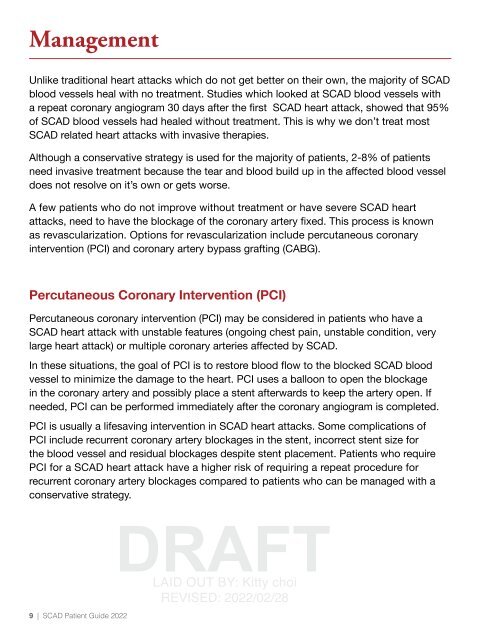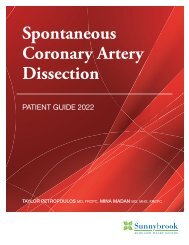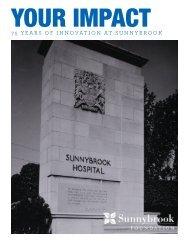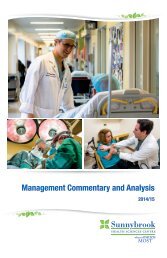Spontaneous-Coronary-Artery-Dissection
Create successful ePaper yourself
Turn your PDF publications into a flip-book with our unique Google optimized e-Paper software.
Management<br />
Unlike traditional heart attacks which do not get better on their own, the majority of SCAD<br />
blood vessels heal with no treatment. Studies which looked at SCAD blood vessels with<br />
a repeat coronary angiogram 30 days after the first SCAD heart attack, showed that 95%<br />
of SCAD blood vessels had healed without treatment. This is why we don’t treat most<br />
SCAD related heart attacks with invasive therapies.<br />
Although a conservative strategy is used for the majority of patients, 2-8% of patients<br />
need invasive treatment because the tear and blood build up in the affected blood vessel<br />
does not resolve on it’s own or gets worse.<br />
A few patients who do not improve without treatment or have severe SCAD heart<br />
attacks, need to have the blockage of the coronary artery fixed. This process is known<br />
as revascularization. Options for revascularization include percutaneous coronary<br />
intervention (PCI) and coronary artery bypass grafting (CABG).<br />
Percutaneous <strong>Coronary</strong> Intervention (PCI)<br />
Percutaneous coronary intervention (PCI) may be considered in patients who have a<br />
SCAD heart attack with unstable features (ongoing chest pain, unstable condition, very<br />
large heart attack) or multiple coronary arteries affected by SCAD.<br />
In these situations, the goal of PCI is to restore blood flow to the blocked SCAD blood<br />
vessel to minimize the damage to the heart. PCI uses a balloon to open the blockage<br />
in the coronary artery and possibly place a stent afterwards to keep the artery open. If<br />
needed, PCI can be performed immediately after the coronary angiogram is completed.<br />
PCI is usually a lifesaving intervention in SCAD heart attacks. Some complications of<br />
PCI include recurrent coronary artery blockages in the stent, incorrect stent size for<br />
the blood vessel and residual blockages despite stent placement. Patients who require<br />
PCI for a SCAD heart attack have a higher risk of requiring a repeat procedure for<br />
recurrent coronary artery blockages compared to patients who can be managed with a<br />
conservative strategy.<br />
9 | SCAD Patient Guide 2022<br />
LAID OUT BY: Kitty choi<br />
REVISED: 2022/02/28

















